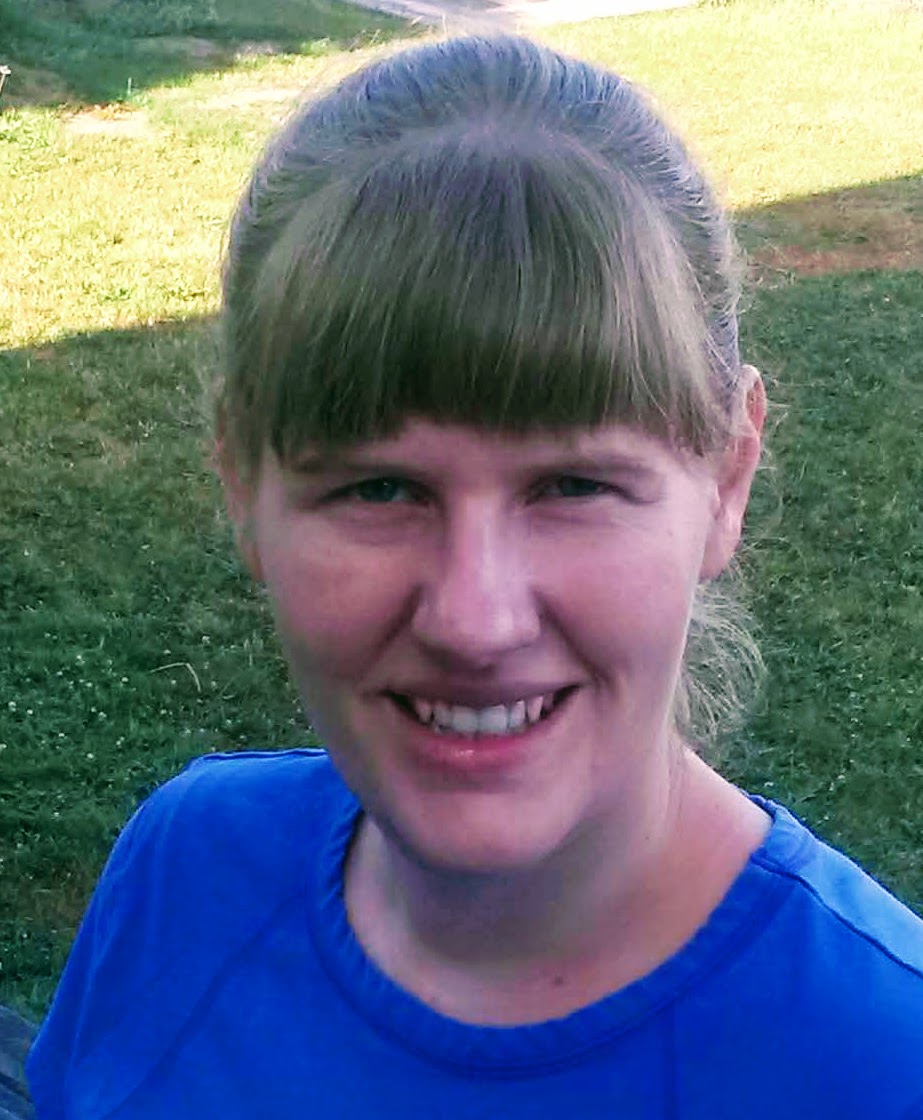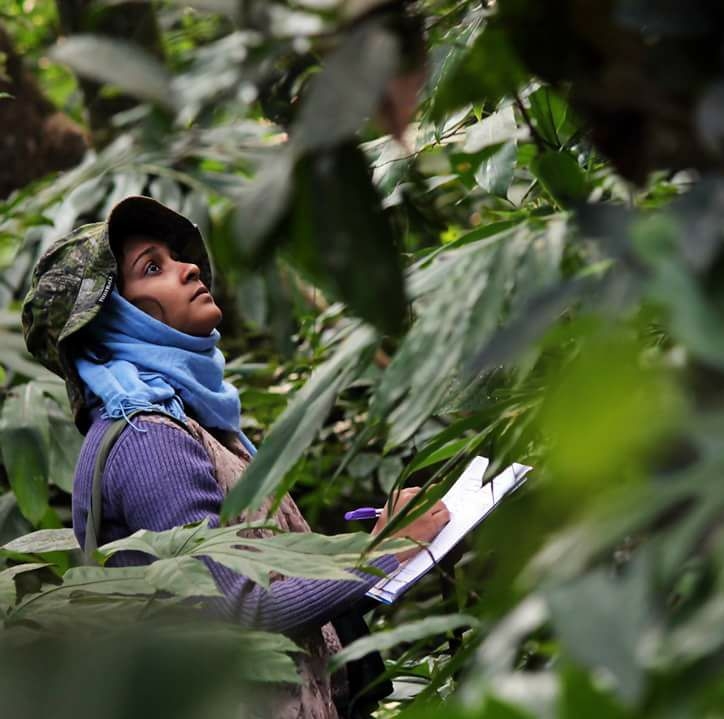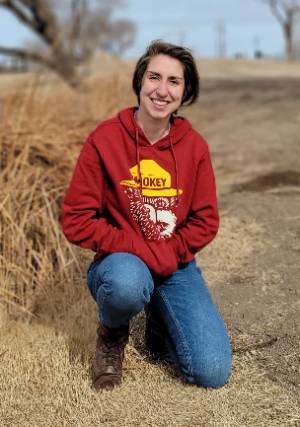Robert D. Bradley's Laboratory
 Joanna Bateman
Joanna Bateman
Teaching Assistant
Ph.D. student, Biology, Texas Tech University
M.S. Biology, Brigham Young University
B.S. Biology, Brigham Young University
I have been researching and constructing the phylogenetic trees of the Heteromys pictus-spectabilis species complex (Painted spiny pocket mice and Jaliscan spiny pocket mice) since 2016 working on my Master's thesis under Dr. Duke Rogers. I began working in Dr. Bradley's lab in 2018, with the main goals of my PhD dissertation research being to determine the actual number of cryptic species present within the complex, to estimate their geographic distributions, and to predict the divergence history of these populations. This builds upon past evidence I have found that this species complex is actually composed of multiple cryptic species, and thus is in need of taxonomic revision. These questions will be primarily addressed through genome (RADSeq) sequencing and geographic data (Cytb haplotype networks, geographic barriers, etc.), using specimens collected across the overall habitat range.
 Sufia Akter Neha
Sufia Akter Neha
Teaching Assistant
Ph.D. Student, Biology, Texas Tech University
M.S. Arid Land Studies, Texas Tech University
M.S. Zoology (Wildlife and Biodiversity Conservation), Jagannath University
B.S. Zoology, Jagannath University
Prior to joining Texas Tech University, I earned bachelor’s and master’s degrees in Zoology from Jagannath University in Bangladesh. I graduated in the summer of 2022 with an MS in Arid Land Studies from Texas Tech University. As part of my MS thesis in the Arid Land Studies program, my research focused on how spatial variation shapes gut microbiome diversity and composition in black-tailed prairie dogs in the Texas Panhandle region. To extend my current research as a biologist, I joined Dr. Robert D. Bradley’s lab in the Department of Biological Sciences at Texas Tech University in the fall of 2022 to pursue my PhD. My doctoral dissertation focuses on structural and functional variations in gut microbiota in wild mammals and explores drivers that shape the patterns of molecular evolution and disease transmission. These ideas have implications for not only making management decisions but also for maintaining biodiversity and the functioning of ecosystems at a larger scale as they allow us to evaluate the risk of disease transmission and provide a richer understanding of evolutionary connections and biological invasions. With my ongoing and future research, I intend to combine molecular, ecological, and spatial data with various methods for understanding genetic viability, disease transmission, and prevention of biological invasions that have broader implications for human, environmental, and animal health. Upon completion of my PhD, I plan to pursue a postdoctoral position, which will provide a strong foundation for my future and a direction toward my career goal as a research scientist.
 Katelyn Albrecht
Katelyn Albrecht
Teaching Assistant
M.S. student, Biology, Texas Tech University
B.S. Biology, Texas Tech University
Born and raised in Lubbock, I completed my B.S. in Biology at Texas Tech University before making the decision to remain at TTU for the pursuit of my M.S. in the fall of 2022, where I am co-advised by Dr. Robert Bradley in the TTU Department of Biological Sciences and Dr. Richard Stevens in the TTU Department of Natural Resources Management. Prior to formally joining Dr. Bradley’s lab, I began work at the NSRL as a biological illustrator for an illustrated field guide to the mammals of Texas. This remains an ongoing project involving collaboration with various researchers and authors, NSRL staff, and use of mammal collections and voucher specimens. Additionally, this personal interest in art and animal form and function helped lead me to and prepare me for the focus of my thesis work: morphological analysis of Phyllostomid bats. The primary goal of my thesis research will be to investigate and identify probable patterns of allometry and modularity of skeletal wing elements throughout the entirety, or near entirety, of the clade using CT scans segmented and measured within the digital software Dragonfly. Biostatistical growth patterns will then be compared and further tested for origin of variance: phylogenetic influence of innate ecological diversity characteristic of Phyllostomidae. This information will be further compared to ear morphometric data for an investigation of ears as an aerodynamic feature of bats. Overall, I hope to uncover morphological patterns related to locomotion and further describe phenotypic variability in the context of phylogenetics and biodiversity. After the completion of my M.S., I plan to continue my education into a PhD and, hopefully, continue work with CT scan data to better define relationships between mammalian form and function both anatomically and genetically.
 Emily Schmalzried
Emily Schmalzried
Teaching Assistant
M.S. student, Microbiology, Texas Tech University
B.S. Biology, Texas Tech University
In 2023, I completed my B.S. in Biology at Texas Tech University. I enjoyed Texas Tech University and Lubbock so much I decided to stay and pursue my M.S. in Microbiology in 2023, with Dr. Robert Bradley as my advisor. Before I properly joined Dr. Bradley’s lab, I took his mammalogy field course at the Texas Tech University Center at Junction, and went on to participate in undergraduate research. My thesis work will focus on broadly surveying the many zoonoses present in two different environments: Chihuahuan Desert and Mixed-Grass Prairie. My goal is to discover the breadth of zoonotic diversity among various taxonomic groups in different geographic regions using RNA Depletion Sequencing. This sequencing method will allow me to block out both the host animal’s DNA and RNA, to be left with only the bacterial and viral RNA that is present. Overall, I hope to not only use this novel sequencing method successfully but to investigate the zoonoses that plague different taxonomic groups, and what role the environment plays on pathogen presence. After completing my M.S., I hope to attend Physician Associate school and one day work in Pathology.
 Brendan Amman
Brendan Amman
Teaching Assistant
M.S. student, Biology, Texas Tech University
B.S. Forestry and Natural Resources, University of Georgia
Before I became a student at Texas Tech University, I earned my B.S. in Forestry and Natural Resources at the University of Georgia. I enjoyed many of the courses I took at UGA but mammalogy was by far my favorite. After months searching for a lab that I believe would be most beneficial for my pursuit of becoming a mammologist, I joined Dr. Robert Bradley’s lab in the Fall of 2024 to pursue my M.S. in Biology. My thesis will focus on screening aoudad from various Texas ecoregions to determine the geographic distribution of Mycoplasma ovipneumoniae strains. The Bradley lab has identified multiple genetic subdivisions of aoudad across the state and my goal is to determine if there is a correlation between strains of M. ovipnemoniae and these clusters. It is believed that aoudad are transmitting this pathogen to desert bighorn sheep so understanding which subspecies carry certain strains of M. ovipneumoniae is important for the future of aoudad and desert bighorn sheep management. After I complete my M.S., I hope to continue conducting research on various taxa with state or federal agencies.
Natural Science Research Laboratory
-
Address
Museum of Texas Tech University, 3301 4th street, Lubbock, TX 79409 -
Phone
806.742.2486 -
Email
nsrl.museum@ttu.edu
